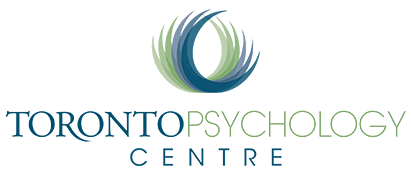
Obsessive-Compulsive and Related Disorders
Break the Cycle of OCD. Rediscover Your Peace.
Living with OCD can feel like being trapped in a relentless cycle of obsessions and compulsions, profoundly impacting your daily life and relationships. These persistent unwanted thoughts and repetitive behaviours make it a challenging condition to manage without professional help. We offer compassionate science-based treatment for OCD and related disorders of hair pulling and skin picking.
Our team is dedicated to helping you navigate the complexities of Obsessive-Compulsive Disorder, empowering you to break free from the relentless grip of obsessions and compulsions. Through personalized treatment plans, we guide you towards reclaiming your calmness and restoring balance in your life. Reach out now to get started.
What is Obsessive-Compulsive Disorder?
Obsessive-Compulsive Disorder (OCD) is characterized by persistent unwanted thoughts (obsessions) and repetitive behaviours or mental acts (compulsions) that a person feels compelled to perform. People perform these compulsions in an attempt to alleviate the distress or prevent the fears associated with the obsessions from becoming reality. However, this relief is usually temporary.
The cycle of OCD begins with the intrusion of obsessions, which are often disturbing and provoke significant anxiety. In response, individuals engage in compulsive behaviours to reduce this anxiety or neutralize the threat they perceive. Soon the obsessions return, leading to an ongoing and distressing cycle of thoughts and behaviours. This cycle can significantly interfere with daily functioning and quality of life, as it consumes time and energy disproportionately.
People suffering from OCD often feel they have no control over their thoughts and behaviours. As a result, they frequently experience guilt and shame. Left untreated, OCD can gradually take over people’s lives, causing intense distress and increasingly interfering with their daily routines, work or school, relationships, and leisure activities. Fortunately, effective treatment for OCD is available.
Common Types of Obsessive-Compulsive Disorder (OCD):
OCD manifests in various forms, and each person’s experience is unique.
Obsessions may involve themes of:
- contamination (e.g., dirt/germs, HIV/AIDS)
- harm to oneself or others
- symmetry/order and exactness
- excessive doubting of one’s words or actions
- not-just-right-feeling about thoughts, objects, emotions, or body sensations
Compulsions may involve:
- hand washing or excessive cleaning
- excessive checking
- arranging or ordering
- praying or mental compulsions like replacing a bad thought with a good thought
- mentally reviewing situations
- repeating behaviours (e.g., erasing, re-ordering or adjusting, re-reading)
Treatments for Obsessive Compulsive Disorder (OCD)
One of the most effective treatments for OCD is a form of CBT called Exposure and Response Prevention (ERP). Exposure involves directly and gradually facing the uncomfortable situations and/or thoughts that trigger distress and avoidance. This leads to habituation, or getting used to that situation or thought. Response prevention focuses on resisting urges to engage in compulsions and other behaviors that generate a false sense of safety, such as reassurance-seeking.
Acceptance and Commitment Therapy (ACT) is also an effective and innovative approach to treating Obsessive-Compulsive Disorder (OCD). ACT focuses on changing a person’s relationship with their obsessions and compulsions. Rather than attempting to eliminate these intrusive thoughts, ACT teaches individuals to accept their presence without engaging in compulsive behaviors. By fostering psychological flexibility, ACT helps individuals recognize that their thoughts do not define them and that they have the power to choose their responses. This approach reduces the anxiety and shame associated with OCD, encouraging individuals to pursue actions that align with their core values. Ultimately, ACT empowers those with OCD to lead more fulfilling lives by promoting acceptance, mindfulness, and commitment to valued behaviors.
OCD Treatment Options
Start managing your OCD today. Reach out to us to discover how our focused, evidence-based treatments can help you break free from obsessions and compulsions. Embrace a life where you control your thoughts, not the other way around. We are ready to support you every step of the way.
Hair Pulling Disorder & Excoriation (Skin Picking) Disorder
These disorders involve body-focused repetitive behaviours (i.e., chronic hair pulling and skin picking) that are difficult to stop. There is often a sensory component in that people tend to try to find a hair that “feels” right or an area of their skin that “feels” different. They may engage in the behaviour automatically (without awareness) or do so in a planned and focused manner. Compulsive pulling or picking may be triggered by uncomfortable urges or feelings (e.g., anxiety, anger, stress, or boredom), by situations or context (e.g., watching T.V., reading, surfing the internet, in the bathroom or bedroom), or by negative thoughts about physical appearance.
Many people describe a feeling of pleasure or relief at the sensation of pulling out their hair or picking at their skin. However, afterward, they are often left feeling ashamed, guilty, depressed, or anxious. Chronic pulling or picking results in physical damage (e.g., noticeable hair loss, patches in hair growth, open sores, permanent scars, skin infections), which many conceal through the use of wigs, scarves, make-up, clothing, etc. or by avoiding social situations altogether.
Treatments for Hair Pulling Disorder & Excoriation (Skin Picking) Disorder
The most researched and commonly used treatment for hair pulling and skin picking is a form of CBT called Habit Reversal Training (HRT). We use an enhanced treatment model that incorporates both Habit Reversal Training (HRT) and Acceptance and Commitment Therapy (ACT). HRT focuses on helping individuals develop awareness of their hair pulling or skin picking behaviours and the context in which it occurs. It also helps them to identify and reduce stimuli or situations associated with the behaviour, learn to substitute an action (e.g., fist-clenching) that is incompatible with the pulling or picking behaviour, and learn relaxation and coping techniques to reduce stress and agitation. ACT complements HRT by teaching mindfulness skills that increase awareness and enhance coping. It also aims to alter the thoughts and feelings surrounding the pulling and to remove the compulsive aspect of the pulling urge.
Recent research has also shown that learning to increase one’s tolerance for negative or or uncomfortable inner experiences may be more effective for individuals who intentionally engage in pulling or picking behaviours. Increased tolerance for negative emotions can also increase effectiveness for those individuals who pull or pick without awareness. Therefore, interventions (such as those taught in ACT or EFT) that help you learn to mindfully attend to, tolerate, and accept internal sensations and emotions are integrated into treatment.
Regain Your Life. Reclaim A Sense of Calm.
Find relief from OCD, hair-pulling, or skin-picking. Contact us today to book an appointment.
